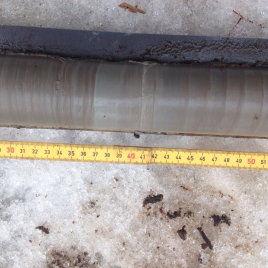
Three months ago, two neutron stars in a galaxy 130 million light-years away from Earth collided with an explosion so powerful that, for the first time ever, astronomers were able to observe a cosmic event of this scale. It all started when scientists at LIGO/Virgo detected gravitational waves, which were at first thought to be a result of a black hole merger. In search of a more precise location for the gravitational wave source, it was discovered that a gamma-ray telescope in Earth’s orbit also detected a burst of gamma rays seconds after the gravitational wave detection. This helped zero in on the location of the star, dubbed SS17a, which was located in a galaxy identified as NGC 4993. Hundreds of astronomers around the world were involved in the search for the supernova, and later, making sense of the wealth of information brought about by the stellar collision. This first-of-a-kind discovery also showed that the fading rate of SS17a’s brightness was unlike any previously observed celestial explosion.
Corresponding Canadian author:
Maria Drout, Dunlap Institute for Astronomy & Astrophysics, University of Toronto, Observatories of the Carnegie Institution for Science, Email: maria.drout@dunlap.utoronto.ca
Research papers published in Science on October 16, 2017:
- Swift and NuSTAR observations of GW170817: Detection of a blue kilonova
- Light curves of the neutron star merger GW170817/SSS17a: Implications for r-process nucleosynthesis
- Early spectra of the gravitational wave source GW170817: Evolution of a neutron star merger
- Illuminating gravitational waves: A concordant picture of photons from a neutron star merger
- A radio counterpart to a neutron star merger
- Electromagnetic evidence that SSS17a is the result of a binary neutron star merger
- Swope Supernova Survey 2017a (SSS17a), the optical counterpart to a gravitational wave source
Associated news release from University of Toronto’s Dunlap Insititute of Astronomy & Astrophysics.

